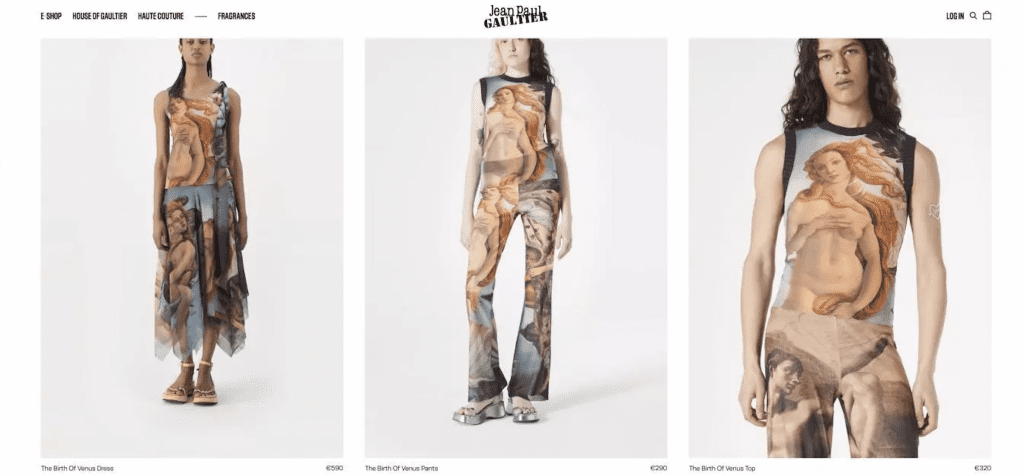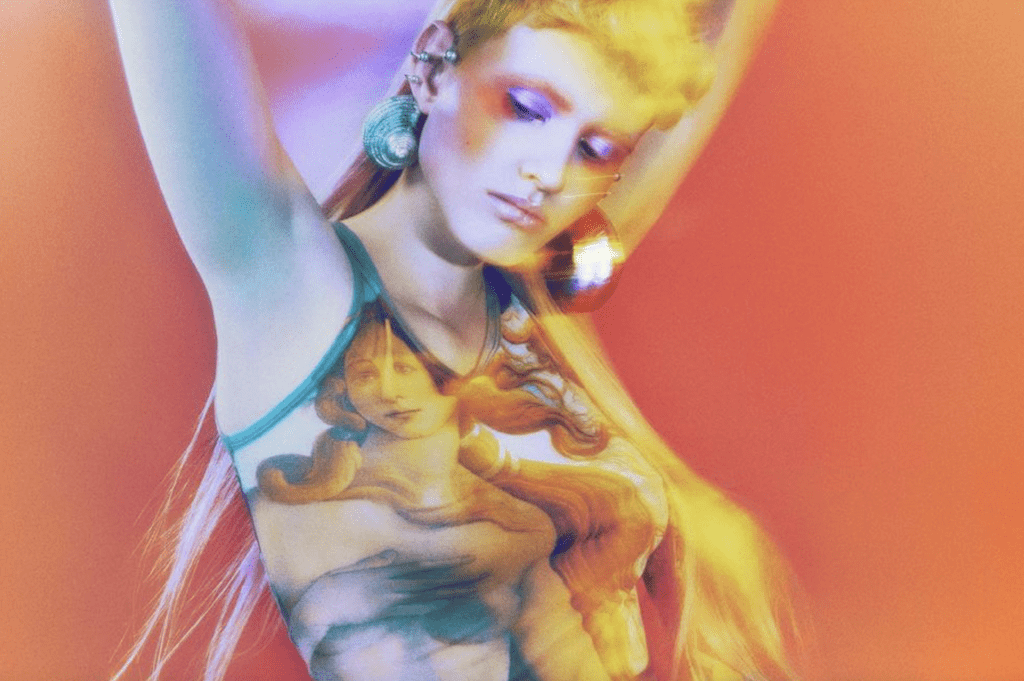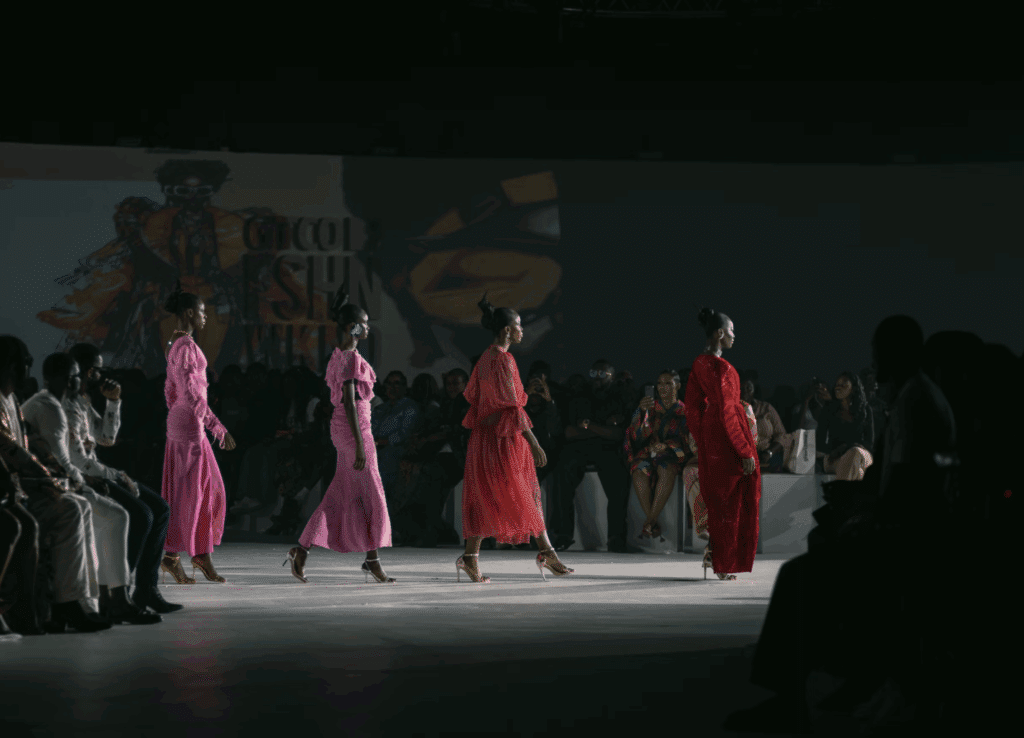A battle over a Renaissance masterpiece has erupted between the Uffizi Galleries and French fashion brand Jean Paul Gaultier. In a statement on Monday, Florence-based Uffizi Galleries revealed that it has initiated legal action against Jean Paul Gaultier over its “illicit” use of images of Sandro Botticelli’s painting, The Birth of Venus, as part of its “Le Musée” capsule collection and corresponding advertising campaign. The Uffizi says that it first put Jean Paul Gaultier on notice of its unauthorized use back in April by way of a cease-and-desist letter, but claims that the fashion brand not only failed to respond to the letter but has continued to make use of the imagery on an array of garments and accessories without “requesting permission, agreeing on how the images would be used, or paying a fee.”
At the heart of the Uffizi’s claim over the more-than-500-year-old masterpiece is Italy’s Codice dei beni culturali e del paesaggio, the Italian Code of Cultural Heritage and Landscape, which provides protection for “objects with a ‘cultural interest,’” i.e., those that fall within the broad gambit of having “artistic, historical, archaeological and ethno-anthropological interest.” According to CBM & Partners Studio Legale’s Giuseppe Calabi, “As a general rule, objects … made by non-living authors more than 70 years ago may be declared of cultural interest,” and with such a designation comes a legal obligation that parties wishing to make commercial use of the works “request authorization [to do so], and pay a fee” in the even that their request is approved.
It is worth noting that the provisions of the Italian Code of Cultural Heritage – which went into effect in 2004 (and were subsequently updated in 2016) – exist independently of copyright law, and thus, remain in force even when a work of art, such as Botticelli’s Birth of Venus, has otherwise fallen into the public domain. Given that is believed to have been painted in the mid-1480s, The Birth of Venus “is classed as being in the public domain, free from copyright around the world,” per Enrico Bonadio, a Reader in Intellectual Property Law at City, University of London.

Calabi notes that “certain uses” are excluded from the obligations established by the Code of Cultural Heritage, such as “the reproduction of such images by private individuals [for] personal use and for the purpose of study, research, creative expression, or enhancement of cultural heritage.” It is not immediately clear if such an exception would come into play here due to the commercial nature of Gaultier’s use; although, it is not impossible to imagine the brand making an argument about creative expression in connection with its designs. Felicia Caponigri, a lawyer, and comparative cultural heritage, art, and fashion law scholar, says that Gaultier could counter the Uffizi’s claims by arguing that “some of the uses are creative re-elaborations.” As “creative re-elaborations” of the original Botticelli work, Caponigri contends that “Gaultier’s use would be kicked out, so to speak, of the cultural property licensing scheme.”
Reflecting on the budding squabble, Uffizi Galleries director Eike Schmidt said in a statement on Monday that Gaultier’s use of the artwork is “totally illegal and has been done without permission,” noting that “if anyone wants to use this material, they must make a formal request, [and] if the request is granted, then they have to pay.” The cost depends on “the volume of sales, price the items are sold for, etc.,” per Schmidt, who says that the sum at play here could exceed 100,000 euros.
Schmidt states that fashion brands “regularly use our images,” which include Leonardo da Vinci, Caravaggio, Titian, Raphael, and Giotto di Bondone, among others, and “most are familiar with Italian law.” Gaultier, however, appears to be an outlier in this regard. He further asserts that the French brand “has boutiques in Italy and sells its products on Italian websites,” and “so, along with everyone else, it is obliged to respect our laws on the rights to use images.”
This is not the first time that the Uffizi has taken issue with unauthorized use of The Birth of Venus, as the gallery pushed back against Pornhub’s use of the image, along with several of the Uffizi’s other masterpieces, in July 2021, prompting the online porn purveyor to remove any references and artworks pertaining to the Uffizi from its website. It is likely that the Uffizi “invoked rules within the Italian Cultural Heritage and Landscape Code,” according to Bonadio, who notes that the law “empowers possessors of cultural heritage artefacts” – regardless of whether they are a public entity (state, region, municipality), private entity (corporation or not-for-profit organization) or an individual – “to prohibit their commercial exploitation, even when they were created centuries ago.”














